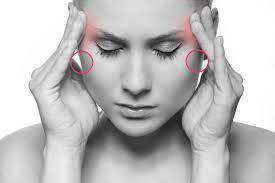By Adam Horwitz
 Did you know that 50% of the population will suffer from headaches in a given year?
Did you know that 50% of the population will suffer from headaches in a given year?
The symptoms of headaches can vary from a mild pain at the back of the head to a full blown migraine with severe throbbing pain with nausea, vomiting, vertigo and even light or sound sensitivity. Nearly all of those with migraines and about 60% of those with tension type headaches will experience reductions in social activity and work capacity.
Headaches can have many triggers or driving factors. One thing they all have in common is, when you are having an episode there is increased nervous system activity in the brainstem (specifically the Trigemino-Cervical Complex or TCC). Understanding this is key to understanding the various management strategies of headaches and migraines.
The TCC has nerve fibres connecting to it that come from the upper three joints of the neck, the TMJ (Jaw Joint), the head and face. Due to this amazing convergence of nerves, a stimulus in one or more of these areas can contribute to sensitivity amongst all of them.
You can think of your headache or migraine like a saucepan of water on a hot stove and when the water gets to boiling point and overflows, you will experience your headache or migraine. If there is pain, stiffness or dysfunction coming from the upper neck joints, the jaw or the head, this will start to fill up the saucepan. Sometimes the dysfunction in the neck joints could cause dizziness and have a role to play in vertigo. If you have jaw joint stiffness, pain or even have had recent dental work performed, this can also lead to increased sensory information, further filling up the saucepan.
On the other hand, some systemic factors can increase the temperature of the stove top. For example, if you are stressed, anxious, experiencing poor sleep, smoke or have a poor diet, these can all increase your nervous system sensitivity. When the mechanical factors combine with the systemic factors, this can cause the saucepan to boil over, leading to a headache or migraine experience.
The positive aspect of having so many contributing factors is that this means there are a range of treatments that could be utilised. A Physiotherapist can help to treat the neck and jaw muscles and joints using manual therapies like massage, joint mobilisations techniques or dry needling. This can help to turn down the temperature of the water and reduce the severity of the neck pain and/or headache. We will also use exercise as a longer term strategy to encourage tissue and nervous system adaptation and resilience. When performed at appropriate intensities and loads exercise can help to increase the size of the saucepan so the water is less likely to boil over. Generally optimising your health in other areas such as sleep hygeine, diet and mental health are often vital too to fully address a person holistically.
So if you or someone you know is experiencing neck pain, jaw pain, headaches or vertigo, come on in to MGS Physiotherapy for an assessment and to get on your road to recovery!
